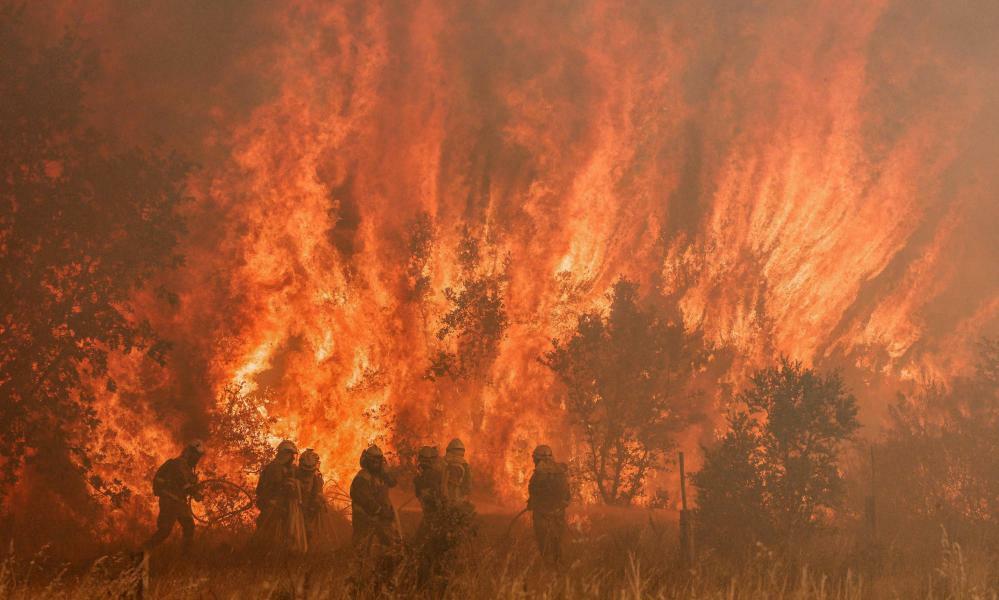11 Dec 2024

Tired Earth
By The Editorial Board

Flames licked roads and coloured the sky orange as firefighters in northern Spain scrambled to contain dozens of blazes fuelled by one of the earliest heatwaves on record.
In the Sierra de la Culebra mountain range in the north-western province of Zamora, flames devoured more than 25,000 hectares, forcing the evacuation of hundreds of residents from 18 municipalities.
Emergency officials said on Sunday that cooling temperatures had enabled them to make gains in stabilising the fire, which one firefighters’ association had described earlier as a “real monster”.
More than 600 firefighters had fought to temper the blaze, which tore through a mountain range that ranks as one of Spain’s green jewels, a densely forested swath of land whose pine trees shelter more than 70 species of bird and one of Europe’s highest concentrations of Iberian wolves.
“It’s really worrying,” said the environmentalist Sergi García. “This is a singular area, home to some of the richest biodiversity in Europe. And it’s been affected by a devastating fire of brutal proportions.”
The area has become known in recent years for hosting one of the largest wolf populations in western Europe, its wooded hills playing a key role in helping the Iberian population bounce back from a few hundred animals in the 1970s to more than 2,500 across Spain today.
Despois de tanto desastre, unha📷 imaxe de esperanza😃#IFSierraDeLaCulebra. pic.twitter.com/e5jzbE0jEE
— Brigada DO FUMO (@brigada_do) June 18, 2022
It was still too early to assess how the fire had affected the wolves, but García said the timing of the blaze – just two months or so after most wolf pups were born – suggested the consequences may be serious.
“The fire affected an area that acts as reproductive nucleus for this species,” he said. “If this had happened in the summer, maybe the pups would have been able to flee. But right now they’re very young.”
Days of scorching heat across Spain were blamed for fuelling dozens of wildfires in eight of the country’s 17 regions. Officials in Catalonia said on Saturday that firefighters were struggling to douse more than 30 blazes.
In the Navarra region, officials evacuated about 15 municipalities as concerns grew that efforts to tackle several blazes could be foiled by high temperatures and winds. “We have a very difficult few hours ahead of us,” the director of Navarra’s interior ministry, Amparo López Antelo, told reporters.
The extreme weather extended to parts of France, which recorded its earliest heatwave in 75 years. Temperatures in the seaside resort of Biarritz reached a record 42.9 degrees Celsius. About 2,500 sheep had to be evacuated after a blaze sparked by an artillery shell fired during military training burned about 200 hectares in southern France.
Fires also broke out in Germany, where residents in three villages near Berlin were ordered to leave their homes because of an approaching blaze on Sunday. In Italy, a record drought led several towns to announce water rationing and the Lombardy region was considering whether to declare a state of emergency.
The extreme weather came as Spain’s state meteorological agency said climate change was leading to earlier summers and a more frequent heatwaves.
“By the mid-21st century, which is not too far away, a normal summer could be as hot as the hottest summer we have experienced so far or even hotter,” the Aemet spokesperson Rubén del Campo said recently. “So what is extraordinary now will end up being normal.”
Source : theguardian.com
Comment